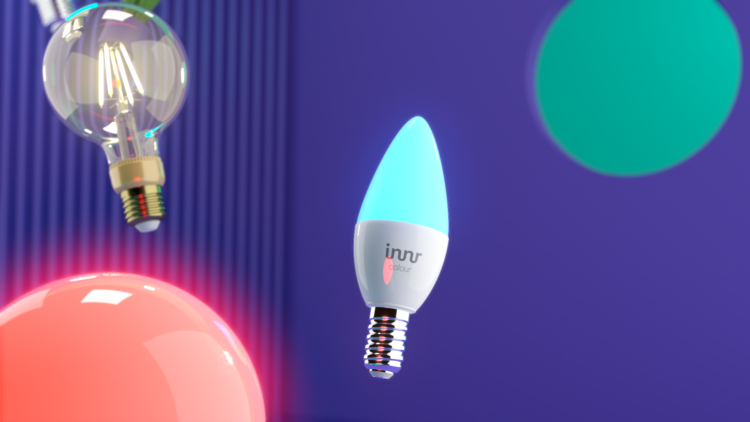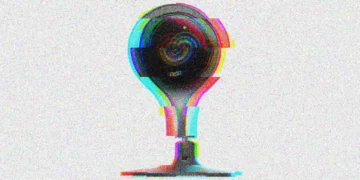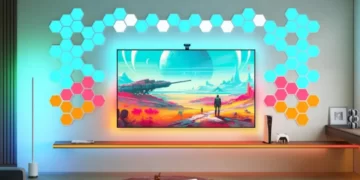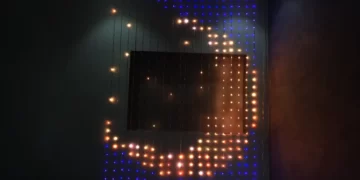Caffeine is Reader Supported, If you do buy through links on our website, we may earn a commission at no extra cost to you. Read the full disclaimer here
When Thomas Edison invented the light bulb in 1879, he probably didn’t think that people would be controlling them with their voices. It’s like magic, really, but how do smart lights actually work?
Usually, your phone or smart voice assistant will send a command to the manufacturer’s servers, and then the manufacturer wirelessly transmits the data to the IoT chip in the Smart Light Fixture to turn off.
Smart Lights are one of the first purchases a person makes before embarking on their fun, yet expensive smart home journey, and understanding them is essential to gain a grasp on the IoT industry and create a functional and connected home, which will solve more problems than it creates.
How Do Smart Lights Communicate?
Not all Smart Light Bulbs are the same, especially when it comes to communication methods, and while you might not notice a difference in the beginning, the more smart home devices you purchase, the more differences you will notice.
Wi-Fi: Most smart lights come in the Wi-Fi variant, and for good reason, it’s the easiest to set up, doesn’t require any more equipment or hubs, and it’s cheaper to manufacture than other protocols (more on that later)
If you plan on getting a couple of bulbs, then getting Wi-Fi bulbs is fine, but if you plan on getting more than a few, then you should check out the other communication methods, as Wi-Fi bulbs will congest your internet and slow down your connection. Wi-Fi is also VERY power-hungry, so you won’t find a lot of Wi-Fi motion sensors, or any type of sensors unless they are hard-wired.
Zigbee: This is the most commonly used communication method for smart home products, as it’s very power-efficient, reliable, and doesn’t congest your Wi-Fi band, However, it does require a hub, which is a one-time purchase.
Zigbee also integrates with a lot of third-party platforms like Samsung’s SmartThings and Hubitat Elevation, Zigbee also has ALOT of accessories like sensors, smart plugs, remotes, speakers, and curtain motors, which will lead to a more connected home. Zigbee also uses the same 2.4 GHz band as your Wi-Fi, however, they don’t interfere with each other in practice, as Wi-Fi will usually drown out Zigbee.
Z-Wave: Z-Wave is sometimes considered the best communication protocol, as it’s efficient and has low-power usage like Zigbee, but unlike Zigbee, Z-Wave operates on its own band, which won’t interfere with Wi-Fi.
Z-Wave also operates as a mesh network with all of your devices, so it covers large distances easily, and also has a large number of accessories, not as big as Zigbee’s, but large nonetheless. Z-Wave is more expensive than the other protocols, as it requires certifications like S3 security.
Bluetooth: Between all of the communication protocols, Bluetooth is the worst in most cases, as it doesn’t have any IoT features other than controlling the light from your phone using an app. If you step out of the range of the smart light bulb (which is short, Bluetooth, remember?) you will lose all connectivity to the smart light bulb.
Matter: At the time of writing this article, Matter still hasn’t had any big step since it was announced, it is based on an open-source framework using the thread communication protocol and it’s backed by the biggest companies in the smart home industry, and will supposedly have great things in the future.
The only “Hubs” I know of that support matter, is the Apple HomePod mini, and the only smart light that exists is the Nanoleaf Essentials Bulb, but more products should come out soon after matter is out of development.
So if you are planning on picking up a light strip or bulb, then Wi-Fi is normal for your needs, however, if you plan on building a fully smart home, then starting on the right foot with Zigbee or Z-wave can be a good thing to do.
White Vs Color Smart Lights
Smart Lights come in a variety of types, one of the differences you will come across will be the color variant. You will have the option to pick between three types, which are:
White: These are usually the cheapest of the bunch, as they only have a single color in each LED. The temperature of the white will be different between manufacturers, and some do offer lights in multiple hues and temperatures
Changeable White: These Lights Come in white, but their temperature is changeable from warm white to cool white, these bulbs are good for a living space or a dining area, as you can change them to suit your mood at a given time.
Color: Color Smart Lights are one of the reasons that people usually get into the smart home ecosystem. You can pick between over 16 million colors, which can make any space very colorful and vibrant. Light Strips are the most common type, which are commonly installed behind Smart TVs or Desks.
Smart Bulbs VS Smart Switches
Smart Lights arent the only way to control your smart home’s lighting, smart switches are also commonly used in smart homes, but there are some reasons to pick one over the other.
Smart Switches are installed instead on a normal switch on your wall, and you keep your normal light fixture installed, so the switch physically cuts off the electricity to your fixture, just like a normal switch.
Compatibility: Smart Lights will work in almost all scenarios, as you just replace the bulb or supply the fixture with electricity, Smart Switches do have other compatibility issues, as almost all of them require a neutral line, which is included in all North American Homes built or renovated after 2011, and it’s usually a bundle of white wires with a cap on the end, but if you are unsure whether you have it or not, you should always contact an electrician. Switches do exist for countries and homes that don’t have them.
Installation: Smart Lights are usually very easy to install, just replace your dumb bulb with a smart light bulb and pair it to the app. Smart Switches however are a different story. They require tinkering with electricity as they are installed in place of your normal wall switch, which is very dangerous to do by yourself, and it’s advised to hire an electrician to deal with that.
Control: Smart Switches are more user-friendly, especially the elderly or people that are less tech-inclined, as they can be controlled via the app, from the physical wall switch, or a voice assistant like Alexa or Google assistant, as opposed to smart lights which can only be controlled from the app or a voice assistant, but there are wireless switches you could buy to control smart lights.
Functionality: From changing color to dancing with music, Smart Lights are more versatile and helpful in more scenarios, they also are also some bulbs that have crazy features, like syncing with your Smart TV. Smart switches are sometimes dimmable, but that’s usually where it ends.
Looks: The innovation in smart lighting has led to the creation of some amazing products, both from a functionality and physical standpoint, manufacturers like Govee, Yeelight, LIFX, and Phillips Hue create some amazing products, that will really add to the look of the home like the Govee Lyra Lamp.
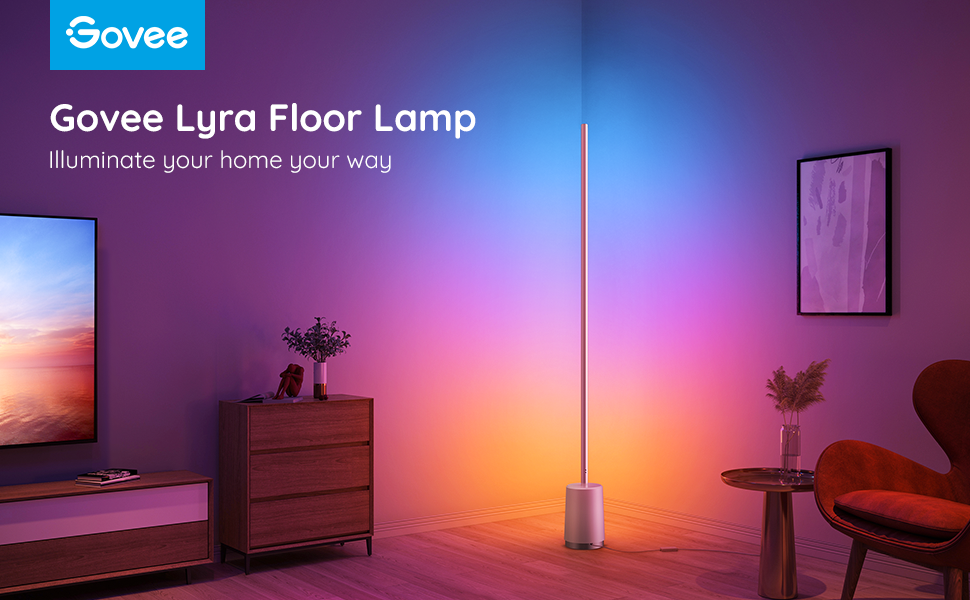
There are some smart switches that also do look amazing, and futuristic, like the ORRO switch which has Alexa built-in, and has many more features like thermostat control and doorbell integration, and the Brilliant Switch which has a screen built-in and integrates with multiple products like Phillips hue and doorbells as well, that will make you feel like you are out of back to the future.
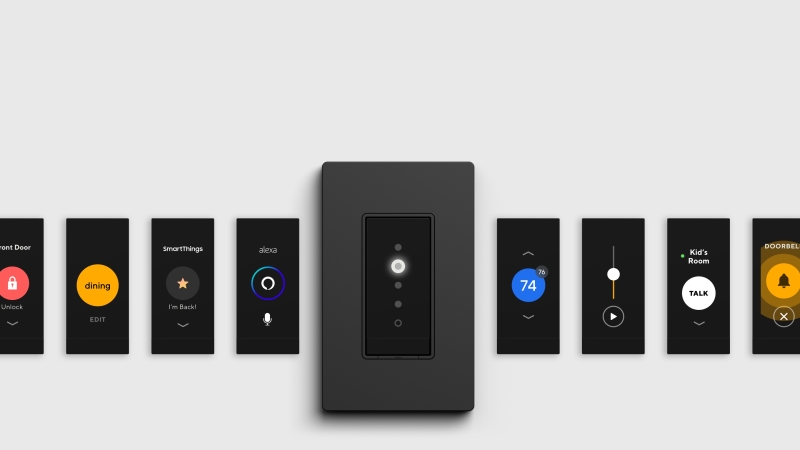
Should You Buy Smart Lights?
Smart Lights are one of the best purchases someone could make, they can really elevate the ambiance of your place, as well as light your home, but it’s advisable not to go overboard, as that can do more harm than good for your family, and make your house look like a nightclub, as well as hurting your wallet.


